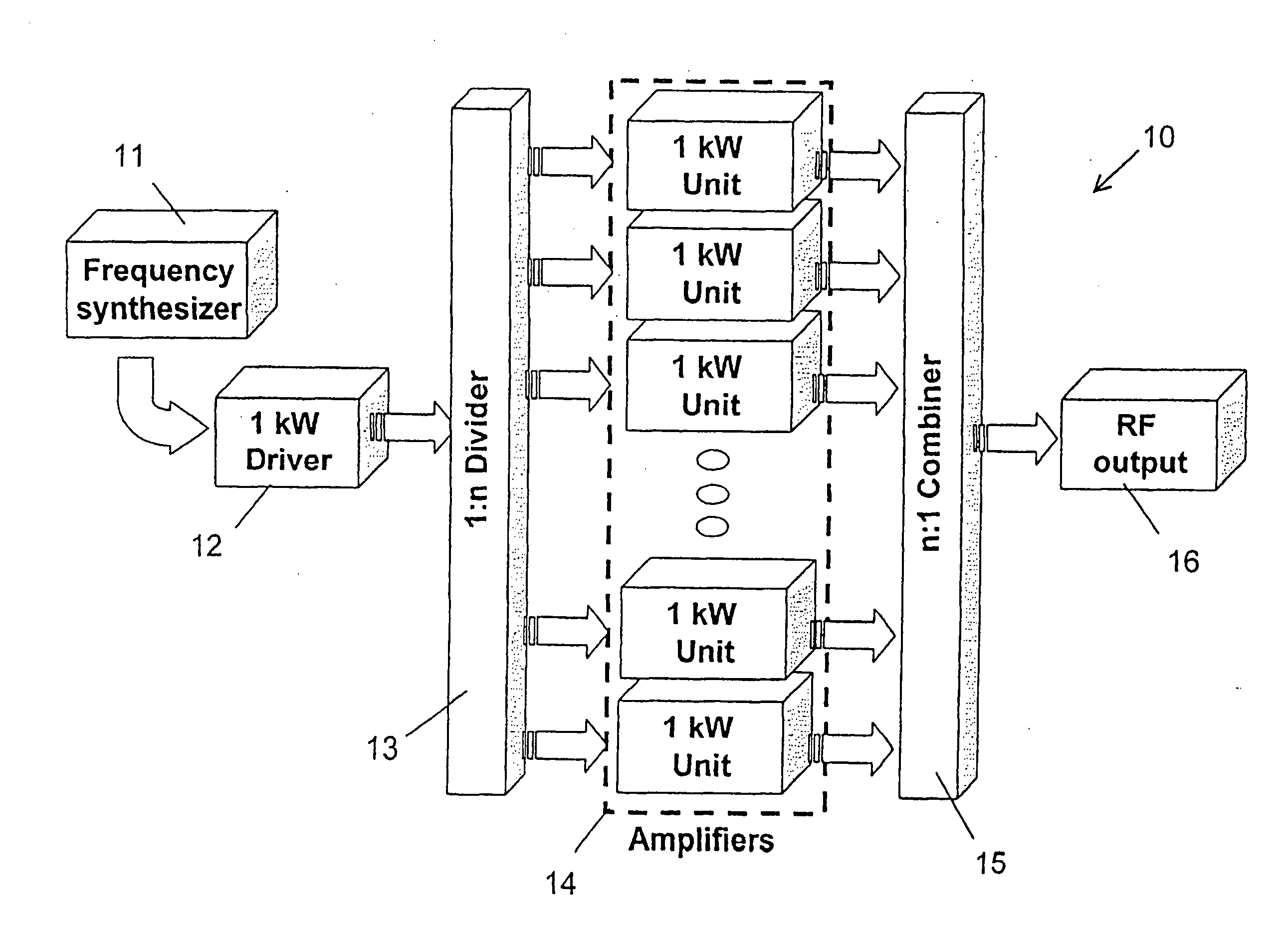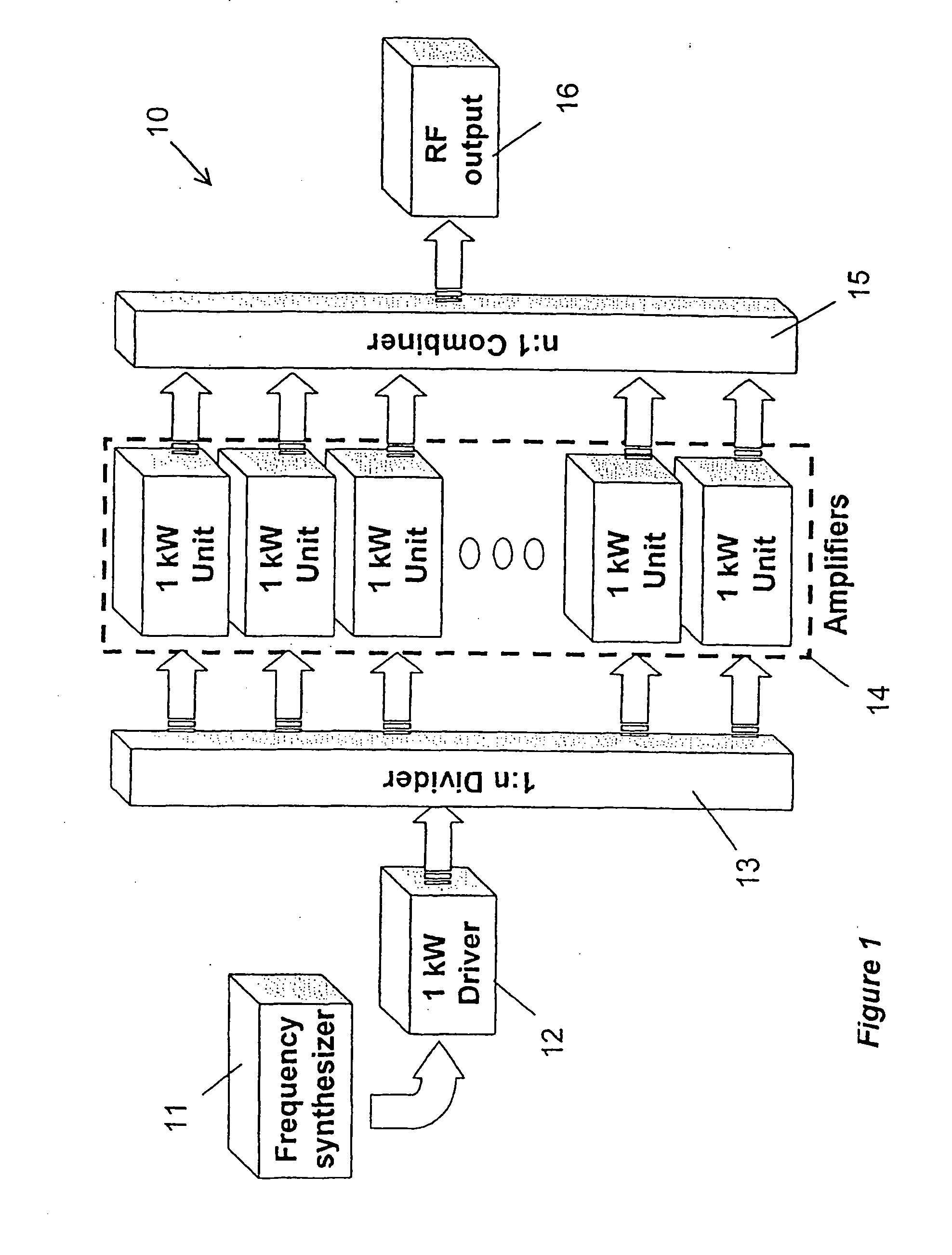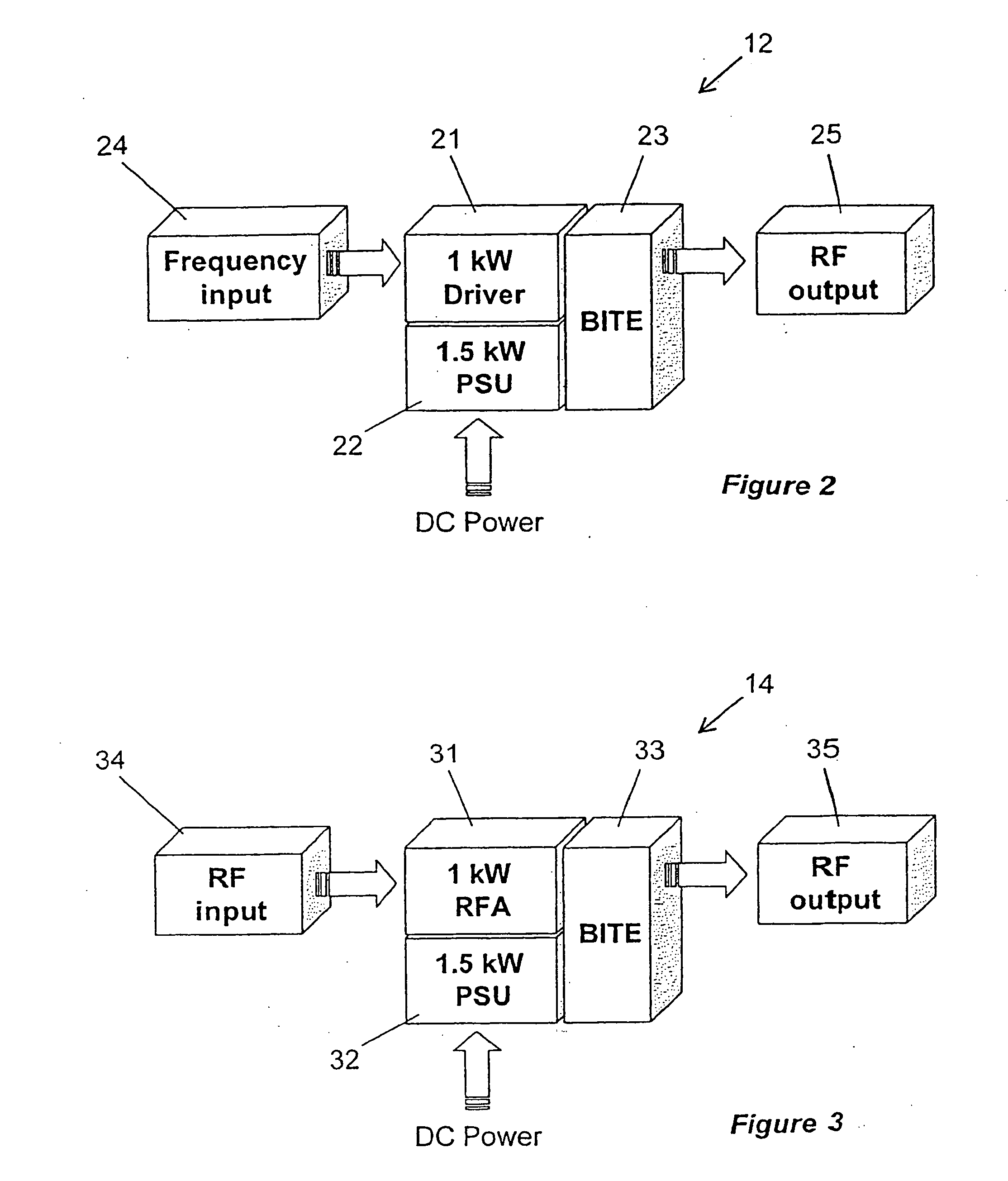Radio frequency textile drying machine
- Summary
- Abstract
- Description
- Claims
- Application Information
AI Technical Summary
Benefits of technology
Problems solved by technology
Method used
Image
Examples
Embodiment Construction
[0027] The present invention proposes a new design of apparatus or machine for drying textiles using high power radio frequency electric fields. The drying capability offered by machines according to the invention allows compact and safe machines to be provided. Moreover, the design of the machine is such that textile dyeing and drying can be carried out in a single machine.
[0028] After textiles are dyed (or otherwise wetted in alternative processing techniques) they need to be dried. Radio frequency (RF) power is commonly used to drying, but textile drying using RF frequencies requires high powers. These maybe obtained using electron tubes to generate the RF wave, but electron tubes, and the designs of proposed drying machines proposed that use them, have disadvantages. An alternative to the electron tube is solid-state technology. This is commonly used to generate RF waves for telecommunications applications, such as mobile telephones and wireless networks. However, these operate...
PUM
 Login to View More
Login to View More Abstract
Description
Claims
Application Information
 Login to View More
Login to View More - R&D
- Intellectual Property
- Life Sciences
- Materials
- Tech Scout
- Unparalleled Data Quality
- Higher Quality Content
- 60% Fewer Hallucinations
Browse by: Latest US Patents, China's latest patents, Technical Efficacy Thesaurus, Application Domain, Technology Topic, Popular Technical Reports.
© 2025 PatSnap. All rights reserved.Legal|Privacy policy|Modern Slavery Act Transparency Statement|Sitemap|About US| Contact US: help@patsnap.com



